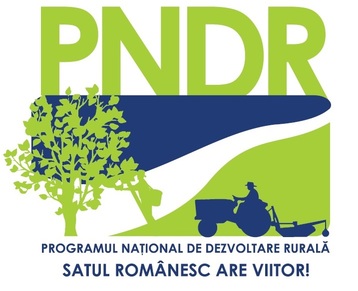
History in a Plate
"History is a nation’s first book." - Nicolae Balcescu
Have you ever wondered if Nicolae Balcescu’s statement applies also in the culinary sphere?
Well, yes, it applies.
Have you ever wondered if Nicolae Balcescu’s statement applies also in the culinary sphere?
Well, yes, it applies.
The famous chef, Anthony Bourdain (RIP), repeated many times in his gastronomic television shows that in order to get to know a nation, one has to taste its food. Likewise, FindaTable considers that before making an opinion about a people one has to know its past and to try its culinary preparations.

When it comes to the Romanian nation, everyone knows it is considered very hospitable and ready to offer everyone unique and unforgettable experiences. Each area of the country has its own historical and culinary specificity, which contributes to the beauty of the country through diversity and peculiarity, something that can also be noticed in the specific cuisine of each area.
Transylvania
Being surrounded by mountains, Transylvania has developed the craft of sheep breeding, which has been transposed into its cuisine either by polenta with cheese and sour cream, or by a tender lamb stuffing, roasted in the oven.
It is absolutely necessary to think a bit about its history if one wishes to understand why Transylvania harmoniously combines the Hungarian influences with the traditional Romanian dishes. Here, the thyme, cumin and paprika are the basic ingredients for the most representative dishes of the area, such as stuffed cabbage and Gulyas, which always go very well with a glass of Romanian traditional spirit – the plum brandy.

As in every farm in Transylvania, the sour cream and fresh cheese are never absent. Thanks to them, the soups and fresh vegetable pottages, prepared with great taste and dedication, make you feel as if you were transferred back into your childhood. Since the Transylvanian is known to be a great farmer, another specialty of the area is the flitch, which, on a feast day, will spoil your taste buds in the most authentic way. And, as a copious meal ends with a delicious dessert, at the Transylvanian table you have many choices: plum cookies or thin ripe pie baked on the bakestone, or wave pie, or chees dumpling. These are just some of the delights in the area.
And if this region still has not convinced you (unlikely though), Findatable tells you just that: its geographical location and climate are favorable for grapevine, the vineyards in the area being renowned for their white wines not only in the country, but also abroad.
Moldavia
When crossing the Carpathians, Moldavia welcomes you as she knows best: cheerful, mainly because hundreds of years ago Stephan the Great left on the sunny hills an inestimable treasure of vast and full-of-flavor vineyards.La capitolul mancare, influentele ucrainene si rusesti si-au facut simtita prezenta prin borsul si pelmenii (paste fainoase umplute cu diverse tipuri de carne) atat de populari si indragiti.
In terms of food, Ukrainian and Russian influences have made their presence felt through the borsch and the very popular and loved “pelmeni” (pasta stuffed with various types of meat).

The Moldavian Borsch is one of the ingredients used for the local soups. A well-known delicacy in the area is “Tochitura moldoveneasca” with polenta, ready to amaze you with its color and taste. In Moldavia, it is absolutely mandatory to try out “Poale in Brau”. If you don’t do that after a tasty meal, one could almost say the meal you have just had is incomplete.
Dobrogea
Heading to the south, one reaches the fishing area of Romania, which is famous for its fish soup, polenta with fish in brine or famous grilled fish with garlic sauce.

If we are still at the barbecue chapter from the menu, we get to the slums of Bucharest, where they have made the appearance of the famous grilled minced meat rolls with mustard. They are so loved by everyone that they have become indispensable on any picnic with friends. Among the Macedonian dishes which can be enjoyed in the southern area of the country, there are the “Piperchile targasite”, which, beside their delicious look, will also leave your mouth watering.
Banat
The Romanian cuisine from Banat has been strongly influenced by the Austro-Hungarian one, just as by the Greek, Italian, Serbian or French cuisines, too. With a taste similar to the American burger, but with a specific identity in taste and shape borrowed from the Serbs, “plescavita” found its place on the Romanian tables next to the other specific Romanian dishes. The locals are proud of the golden chicken soup with carrots and home-made noodles, “papricas”, scraped bean with thyme, potatoes with dumplings, staffed cabbage or “taschelele” with different fillings. These are only a few of the traditional dishes of the place, having in mind the people from Banat love to eat well.

The noodles will be encountered not only in the usual recipes, but also in desserts. The most famous dessert in the western part of the country is “Varga Beles”, a home-made pudding with noodles, sweet cheese and raisins. If you have not tasted it yet, prepare yourself to get your senses delighted in the most unexpected and pleasant way.
The Romanian nation has also understood that, in terms of food, an opening towards the culinary influences of the neighboring peoples cannot be anything but beneficial, this making the Romanian cuisine richer and more diverse.

Categorii





